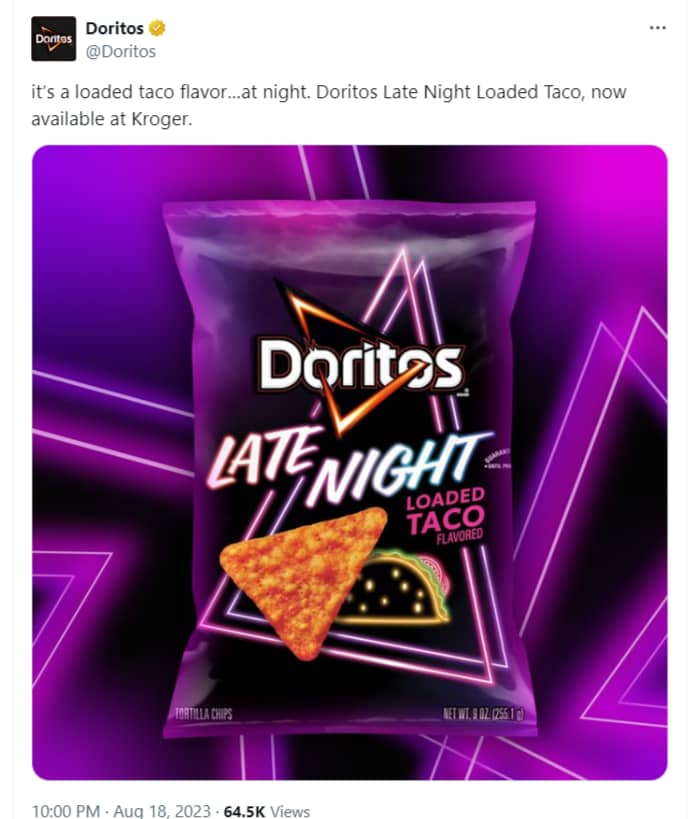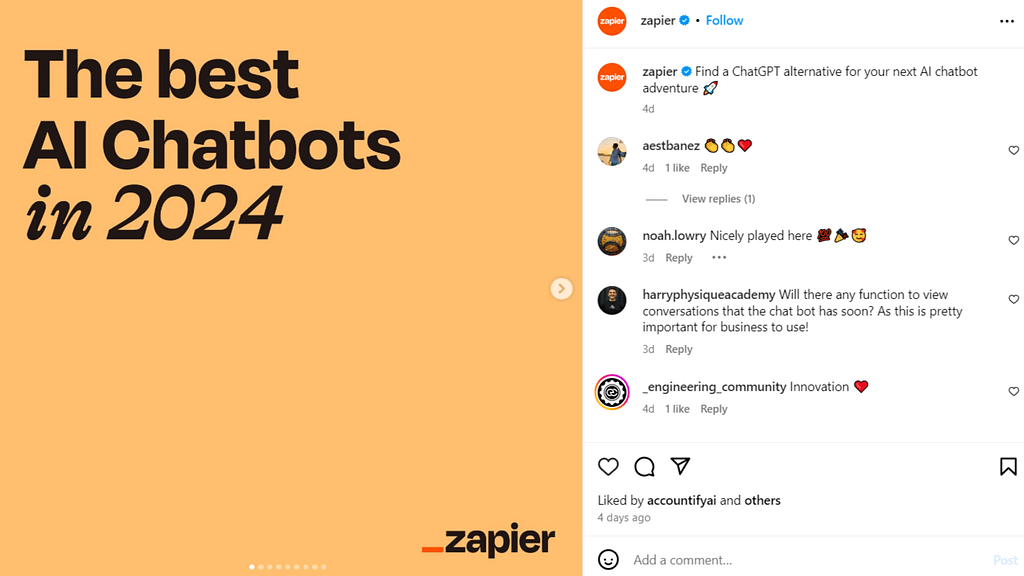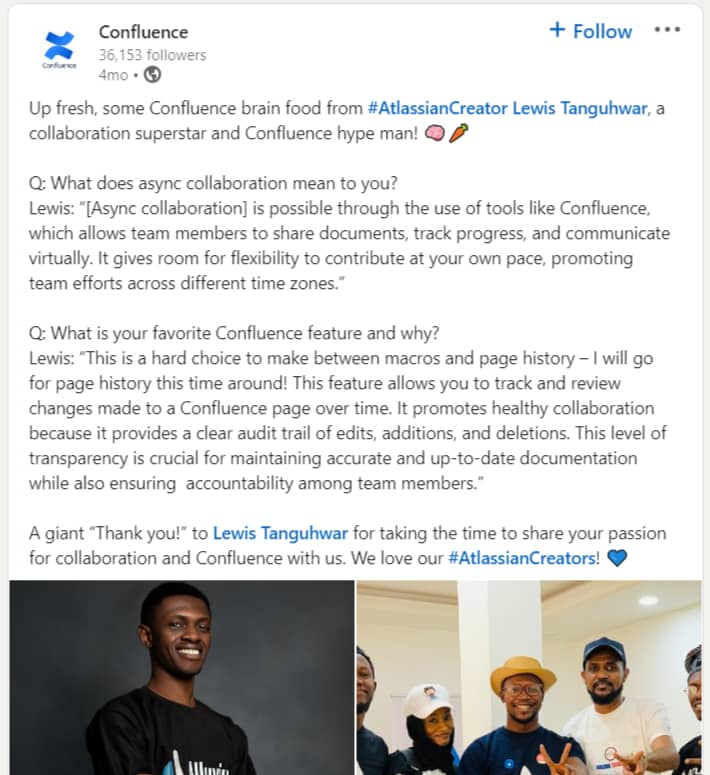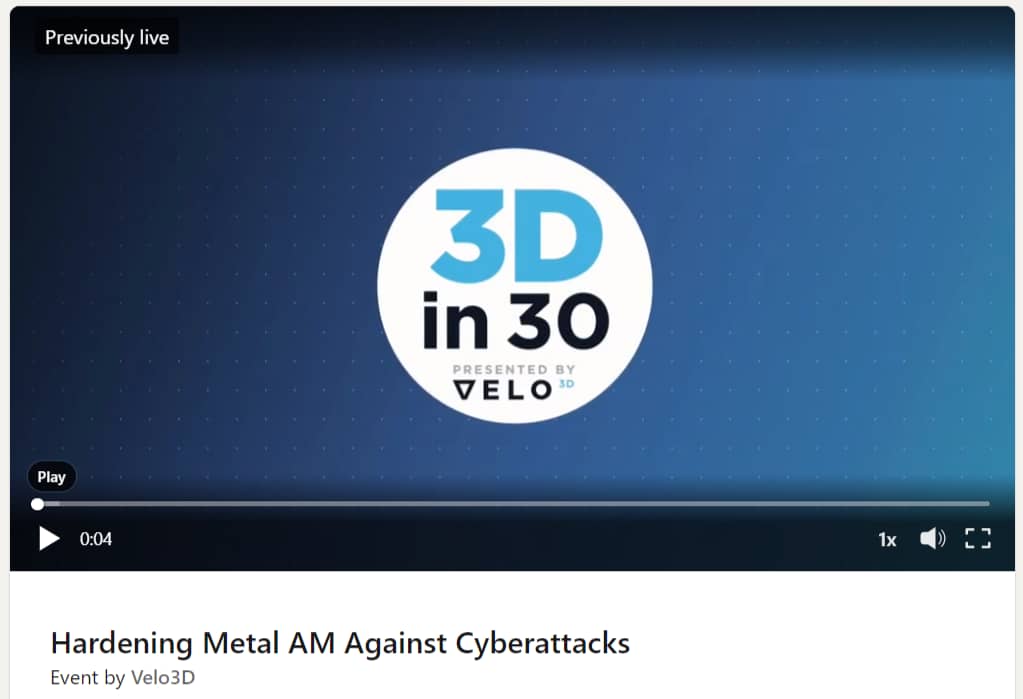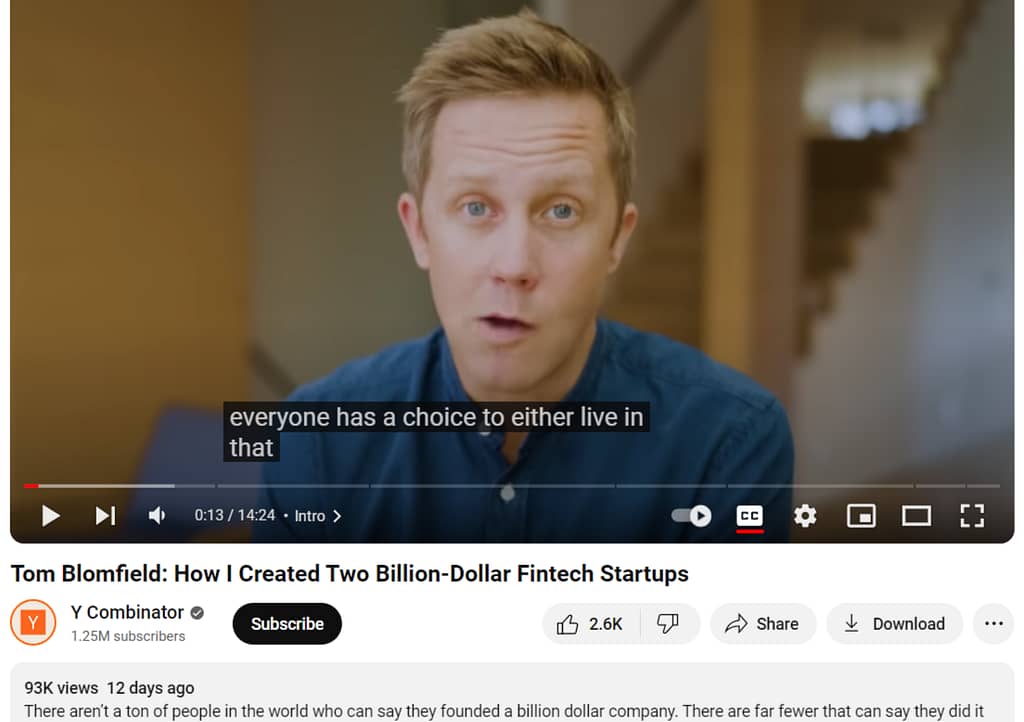Posted 03.13.2024 by Josh Krakauer
Episodic Content on Social Media: How to Craft Social Stories
A guide to episodic content, complete with definitions, types, examples, and methods to create it.
As attention spans shorten and scrolling becomes second nature, one thing remains the same: Our appetite for stories and narrative experiences.
To put it bluntly, it’s a human trait to be addicted to stories.
We’re constantly pursuing new ones, along with topics, protagonists, formats, and whatnot.
For brands, however, it can be challenging to come up with these narrative experiences, which are the life and blood of a meaningful presence in social media (let’s not forget, social media is where the majority of stories spread nowadays).
In this context, it’s a no-brainer to consider episodic content as a tactic to increase brand awareness and foster deeper connections with the audience.
The question is — how do you get episodic content right? It’s 2024, and a “Throwback Thursday” series won’t cut it anymore!
To address this bottleneck and expand your horizons, we’ll cover the topic extensively and provide you with:
- A definition of episodic content.
- Types of episodic content.
- Formats of episodic content.
- Real-life examples of episodic content in social media.
- Pros and cons of including episodic content in your social media strategy.
- An approach to creating episodic content for social media.
As a bonus, we’ll also share a few insights on how B2B brands can leverage episodic content in their social media efforts.
Ready? Then let’s dive right in.
What is episodic content?
Episodic content refers to a narrative format where a story or topic is divided into sequential episodes or parts.
Each episode contributes to the overall story, creating a cohesive and unfolding storyline.
In the context of social media marketing, episodic content involves delivering a narrative in a serialized manner across different posts or updates.
Rather than sharing a complete story in a single post, creators strategically break down the narrative into smaller, engaging segments, aka episodes.
It’s also worth noting that episodic content on social media often takes advantage of each platform’s features.
For instance, episodic content on YouTube is delivered as individual videos in a playlist. On X (Twitter) episodic content is usually delivered as a thread, while on Instagram it might come up as consecutive Stories, or multi-image posts.
Types of episodic content
From threads that unfold seamlessly to carousel posts that capture your attention longer than usual, episodic content comes in many types and forms across social media.
If you’re thinking about including episodic content in your social media strategy, it’s always a good move to evaluate the different types of episodic content, which we’re sharing below.
Interview or conversation series (including podcasts)
In this type of episodic content, the focus is on engaging discussions and conversations with guests, experts, or industry leaders.
Each episode typically features a new guest or topic, although there’s also the case for breaking down a single interview into multiple episodes due to its extension and value.
This type of episodic content often comes in the form of podcasts and videos, and it’s almost exclusively aimed at entertaining, informing, and inspiring through dialogue.
Educational series
Educational series are designed to provide informative episodes of content.
Each episode delves into a specific topic, concept, or skill, offering valuable insights and tips.
Whether it’s tutorials, how-to guides, or deep dives into complex subjects, the goal is to provide the audience with knowledge and enhance their expertise in a particular area.
Story series
Story series are all about narrative-driven content, where each episode contributes to unfolding the plot, developing characters, and exploring themes.
Story series can be fiction or nonfiction – from serialized dramas to personal anecdotes, they leave the audience craving for more, creating anticipation and emotional investment in the narrative.
Single-series episodic content
This type of episodic content is defined by multiple bits of content structured within a single, larger post. Examples include:
- Carousel posts on LinkedIn, Facebook, Instagram, TikTok, and Reddit.
- Threads on X.
While each platform limits the extension of your single-series episodic content, the limitations tend to be quite flexible.
For instance, LinkedIn allows you to use up to 20 images in a single post, and Instagram limits the number of stories you can upload in a day to 100.
Finally, there’s the outlying case of X threads, which can go on for as long as you want.
Multiple-post episodic content
In contrast to single-series, multiple-post episodic content consists of multi-part narratives that get distributed over a while.
In other words, multiple-post content is about creating extended story arcs that span across several different posts, often published in different days, weeks, or even months.
An example of this type of episodic content is Brandon Stanton’s Humans of New York, which tends to deliver stories in multiple posts (sometimes, more than 20!), published over a few days.
Also, Stories on Instagram, Facebook, and TikTok are often leveraged to create multiple-post episodic content, although they’re limited by design to disappear 24 hours after they are posted.
Fixed-frequency episodic content
This type of episodic content is often presented as regularly scheduled series that get published as weekly, monthly, or even yearly updates.
These series often address trends or try to create new ones.
Good examples of fixed-frequency episodic content are hashtags that set a specific tone and topic, such as #TBT or #MondayMotivation.
Seasonal episodic content
As the name indicates, this type of episodic content is tied to special dates and observances that take place during the year.
Examples are:
- Content referring to holidays, such as Christmas or Memorial Day.
- Content referring to observances like Black History Month, or Breast Cancer Awareness Month.
Interactive episodic content
Interactive episodic content is a form of social media storytelling that involves the audience in the narrative experience beyond the ever-present comments and reactions.
In other words, it invites viewers to participate, make choices, or contribute to the unfolding story.
Examples include polls, quizzes, and challenges that unfold throughout several posts.
Branded episodic content
This type of episodic content is specifically designed to promote a brand, product, or service, and involves elements of the brand in itself.
For example, Pizza Hut often creates several posts around National Pizza Day and includes key brand elements related to its products and color palette in its posts.
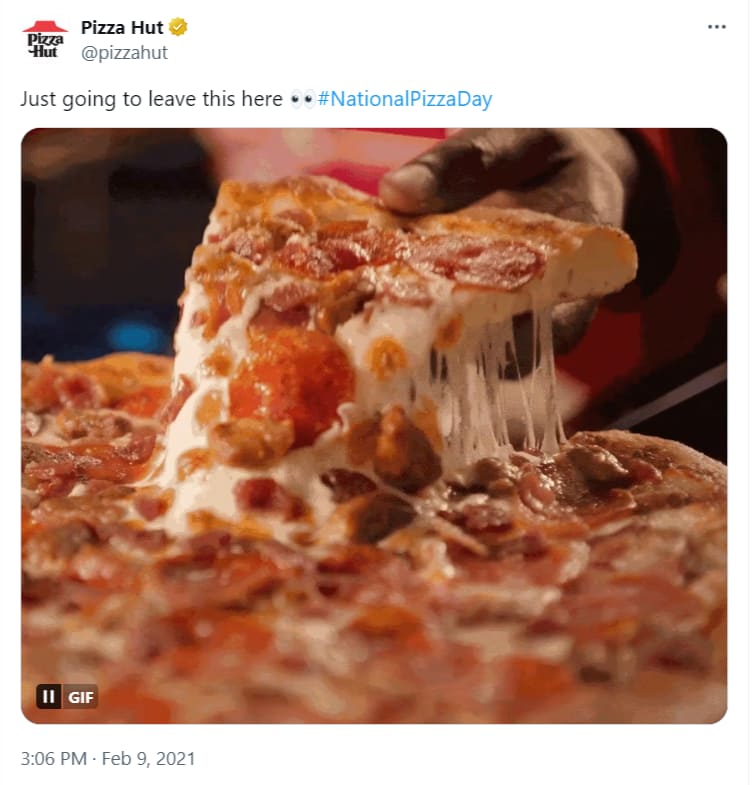
User-generated episodic content
Encouraging the audience to contribute to the ongoing narrative is important in any social media strategy, and such efforts can be delivered in an episodic format as well.
User-generated episodic content is often related to trends/seasonality and encourages users to share a certain experience or aspect of their lives that is related to a particular topic or event.
Live episodic content
Finally, there’s also live episodic content, which involves real-time storytelling through live video sessions.
Although less frequent than the others, this type of episodic content is becoming increasingly popular on LinkedIn, as well as other social media platforms supporting livestreaming.
Episodic content formats
While episodic is a format in itself, it can also be broken down into different sub-formats as well. These include:
- Single multi-image posts, also known as carousel posts.
- Single multi-video posts (not very popular, but usually found on X).
- Pre-recorded video series (popular on YouTube, Instagram, TikTok, and Snapchat).
- Live video series (popular on Twitch, but also present on Facebook, YouTube, and TikTok).
- Consecutive posts (aka threads or series, popular on X and Facebook).
- Non-consecutive posts with a common denominator (i.e. hashtags, seasonal content).
On occasion, it’s also possible to encounter longform episodic content across social media. For example, film production studios often leverage this format by releasing different trailers of a major film before its theatrical release.
Episodic Content vs Evergreen Content
The concepts of episodic content and evergreen content overlap (and a piece of content can certainly fit both definitions at the same time), but there are noticeable differences between them.
While episodic content is defined by its serialized nature and ongoing engagement, evergreen content is defined by its timeless nature, enduring value, and utility for audiences over an extended period.
Both types of content play distinct roles in a content strategy, catering to different audience needs and objectives.
There are many examples of episodic content that is (more or less) evergreen, ranging from TV series like Friends and Seinfeld to Bob Ross’ painting tutorials and Subaru’s “Love” campaign, which has been running since 2007.
Usually, evergreen episodic content is centered around a specific concept, and relies on brand proof points and “reasons to believe”, which are conveyed within storytelling.
Examples of episodic content on social media
Now that we covered episodic content types and formats, let’s share a few real-life examples of episodic content.
1. Seasonal episodic content: NBA on YouTube
A classic example of seasonal episodic video content is the NBA’s top 10 plays of the night.
This type of episodic content is by far the most popular on the NBA’s YouTube channel, gathering hundreds of thousands of views with each release.
It falls under the “seasonal” category of episodic content and follows (very obviously) the pre-recorded format.
2. Multi-post episodic content: Doritos on X
America’s most beloved brand of flavored tortilla chips has been leveraging multi-post episodic content on X (Twitter) for quite a while now.
How so? Every other week, they post a different Doritos flavor for each occasion.
3. Single-series episodic content: Zapier on Instagram
Zapier’s carousel posts on Instagram show how episodic content can be used to break down a trove of information into easily digestible bits.
Achieving this level of simplicity to deliver a message is something any social media manager should strive for!
Pros and cons of including episodic content in your social media strategy
As with other strategic decisions, creating episodic content for social media is something that must be pondered before jumping the gun.
The pros are pretty straightforward, as episodic content offers the possibility to:
- Increase brand recall, awareness, and recognition.
- Strengthen the bond between the brand and its audiences.
- Create a sense of anticipation (and even urgency) to consume new episodes of content.
- Achieve higher levels of variety regarding the content you’re publishing.
On the other side, there are some cons to consider as well, including:
- Complexity and depth: Breaking down content into episodes is fine, but not always easy due to the challenges presented by the overarching narrative.
- Originality: Jumping on the bandwagon of tired hashtags is easy, but won’t automatically translate into demand. As with other formats, you must bring something cool to the table.
- Production: Creating a series of content around a topic is always more complex than posting a one-time update.
In short, episodic content can be an excellent tactic as long as you can handle production challenges, stay original, and break down an extended narrative into interesting bits.
Who is using episodic content?
Out of the top eight brands on Instagram (by number of followers), seven publish episodic content almost every week.
We’re talking about brands like Nike, Louis Vuitton, H&M, and Gucci here.
Granted, it’s a small, non-representative sample – all apparel brands that launch new collections on the regular – but still tells the importance of episodic content within a social media strategy.
Aside from these, most brands out there limit themselves to using just two types of episodic content: Single-series (i.e. multi-image posts on Instagram), and seasonal.
Is there space for more? Absolutely! (And hopefully, this is the reason why you’re reading this article 😉).
How to create episodic content for marketing purposes?
While there’s not a single method for creating episodic content, there are formulas that you can follow to structure your content creation efforts and accelerate the production process.
One of these consists of 5 simple steps – let’s take a look.
1. Define your narrative arc
It all starts with identifying the overarching story you want to tell.
Armed with the baseline concept, you’ll be able to decide on the key elements (such as characters, products, or topics) and messages you want to convey throughout the episodic content series.
2. Plan the episode breakdown
This step is about breaking down your overarching story into episodes.
Determine the key points, events, or information you want to share in each installment and define which CTA works best for all.
Also, here’s where you consider the optimal frequency for posting so you can maintain audience interest without overwhelming them.
3. Utilize platform features
Leverage the features of the social media platform you’re using.
For instance, on Instagram, use Stories or Carousels; on X, consider creating threads; and on YouTube, structure content into episodes.
Tailoring your episodic content to platform-specific features is nothing but homework to maximize engagement.
4. Encourage interaction and engagement
Incorporate interactive elements to involve your audience. For example, you can ask questions, encourage comments, and even create supporting posts to drive extra attention to your episodic content.
This engagement not only strengthens the connection with your audience but also keeps them anticipating the next installment.
5. Consistent branding and promotion
The theme within an episodic content series shouldn’t be limited to the episodes themselves, but also permeate your brand’s identity in subtle, yet recognizable ways.
In other words, make sure to promote upcoming episodes and create anticipation by previewing what’s to come.
You can also utilize hashtags or a unique series name to make your episodic content easily recognizable at a glimpse!
How to leverage episodic content as a B2B brand?
One of the hardest challenges for B2B brands is to achieve higher levels of brand recognition – and this is something that episodic content (given its traits) can help with.
Based on our experience as a B2B social media agency, there are three types of episodic content that work well for B2B:
- Interview series.
- Education series.
- Story series.
The most common format for B2B is the education or interview series.
It’s popular among brands because it makes content production predictable, and also because it’s easily repurposable (i.e. a pillar story becomes multiple clips in different formats down the road).
In addition to these, entertainment or edutainment series (a hybrid) can also fly in a B2B setup.
Examples of B2B episodic content
We’ve put together a short list of B2B episodic content examples to illustrate the words above.
Interview format: Podcast clips, conversations between experts, meet-the-team series. Confluence, a category leader in the project management and collaboration space, is really good at it.
Education format: 3D metal printing and additive manufacturing company Velo3D does a monthly series called 3Din30, where they focus on a specific industry topic over a 30-minute LinkedIn Live session.
A nicely-packed series that resonates with the company’s core audience.
Story format: If there’s a company getting this right, that is Y Combinator. Their “founder’s journey” videos are not only neatly produced, but also incredibly engaging, gathering tens of thousands of views in just a few days.
Getting started with episodic content as a B2B brand
The smart way to think about episodic content is to see it as any other relevant piece of intellectual property (IP).
Think of it as, say, a TV franchise, where you have:
- Franchise/Show: The overall series, your IP; this is a conceptual level.
- Season: A group of episodes with a similar theme or format.
- Episode: An individual piece of content, usually longer format
- Clips: Snackable, entertaining cutdowns of each episode that live on social media as teasers or takeaways.
- Commercials: Yes, self-promotion can even live here in the middle or end of an episode.
Second, treat your product or service’s inherent complexity as an advantage.
Complexity is a prime source material when it comes to creating bits and bites of information that are easier to understand and consume framed in episodic packages—especially video.
Top-performing B2B video series tend to balance education and entertainment.
Third, explore the potential stories that exist within your brand, products, and services.
Just like any other brands, B2B companies have powerful customer-oriented stories to tell, which can be turned into content episodes that bring them closer to their audiences.
To find your angles, ask yourself questions like:
- What’s a core pain our customers have that we solve?
- What are the user stories linked to your products and services?
- Could any of these stories be connected with a similar theme and turned into a series told over time?
This marks the end of our episodic content article. Ready to elevate your B2B brand’s storytelling game?
Book a call with us and learn how we can help you craft compelling episodic content tailored to your industry!
read this next
45 Creative Social Media Content Examples for 2024

